The institutionalisation of digital assets is no longer a theoretical ambition, it’s a live, operational shift. As allocators reassess portfolio construction in a post-60/40 world, attention is turning to the infrastructure that underpins crypto exposure: custody, product structure, and regulatory clarity. The firms leading that charge aren’t building hype, they’re building systems.
Bitwise Asset Management, a US-based investment firm founded in 2017, has positioned itself at the centre of that transition. Known for its index-based crypto funds and research-led approach, Bitwise has spent the past eight years developing products that meet the operational and compliance standards of professional investors.
Bradley Duke, now head of Europe at Bitwise, was one of the founding figures behind ETC Group, the European issuer of exchange-traded crypto products acquired by Bitwise in 2023. His background in traditional finance, algorithmic trading, investment banking, and market infrastructure, shaped the firm’s institutional-first approach.
“We weren’t trying to be first,” he says. “We were trying to be investable.”
In just a few short years, Duke believes the investment dynamic has fundamentally shifted, with cryptocurrencies – and Bitcoin in particular – hard to ignore for institutional investors.
“A 1–5% allocation can add 200 basis points of outperformance, improve Sharpe ratios, and have minimal impact on drawdown,” he says. “It’s getting harder to justify excluding it.”
Yet, Duke understands how the path crypto has taken into to broad popularity may not immediately lend itself to inclusion within institutional portfolios.
“Retail got there first, and institutions had to catch up,” Duke says. “That inversion created friction. If you’ve spent 20 years talking about bonds and suddenly there’s an asset class you don’t understand, it’s uncomfortable.”
Bitwise has responded by producing research in familiar formats: white papers, market commentary, and investment banking-style coverage.
“We want people to be able to speak confidently about this space,” Duke says. “Not just to clients, but internally to boards, committees and regulators.”
The firm’s internal modelling supports the case for inclusion.
“You get better portfolio metrics with minimal downside,” Duke says. “It’s almost at the point where people should be defending why they’re not including it.”
Tokenisation: Infrastructure, not ideology
While crypto exposure remains a core focus, Duke believes tokenisation is the more transformative trend. “The more wealth that moves on-chain, the more need there is for tokenised infrastructure,” he says. “It’s not about ideology, it’s about efficiency.”
He points to the frictions in traditional finance: delayed settlements, frozen capital, and opaque processes. “There are still major hurdles when trying to move digital assets back into legacy banking systems,” Duke says. “Even when everything is fully compliant, the operational response can be disproportionate.”
Tokenisation offers a way around those bottlenecks. “It’s just another channel,” Duke says. “Same products underneath, but with better liquidity and lower costs. And now we have legal assurance, which ICOs never had.”
Bitwise is already fielding inbound interest from sovereign entities and institutional allocators. “There’s a game theory element,” Duke says. “Who’s buying, and whether they announce it. Some are accumulating quietly.”
The profile of investor engagement has changed. “We used to get juniors sent to our lunch-and-learns,” Duke says. “Now it’s chief economists, CIOs, and heads of strategy. The questions are sharper, too.”
He believes the breakdown of the traditional 60/40 portfolio has accelerated the shift. “It’s not working anymore,” Duke says. “People recognise that, and they’re looking for alternatives.”
Engineering credibility
Bitwise’s fee structure reflects its institutional orientation. “We started at 2%, everything in crypto was more expensive,” Duke says. “Insurance, D&O, even getting a bank account was hard.”
Today, its core Bitcoin product charges just 20 basis points. But Duke cautions against focusing solely on headline TERs. “Look at what share of staking rewards the issuer gives back,” he says. “You might save pennies on fees but lose pounds in yield.”
He draws a parallel with securities lending. “It’s fine if you know it’s happening,” he says. “But if it’s opaque, you’re funding someone’s new office without knowing it.”
Bitwise’s stance is clear: “It’s the investor’s money, their risk, their return,” Duke says. “We’re not doing this for love, but we believe in transparency and fairness.”
Building for institutional standards
Duke’s early career was shaped by the technology arms of major financial institutions. At Jefferies and later Knight Capital (now Virtu), he worked on electronic and algorithmic trading systems or “the parts of finance where tech innovation was actually happening,” according to Duke. That grounding in infrastructure would later inform his approach to digital assets.
In 2017, while advising a quantitative hedge fund, Duke was asked to help launch a Bitcoin ETP in Europe. At the time, institutional options were limited. “There was Grayscale in the US and XBT Provider in Sweden,” he says. “Neither were ideal from a risk or compliance perspective.”
The goal was to build a product that could pass muster with investment committees and risk departments. “We wanted something that could sit alongside traditional exposures in a portfolio,” Duke explains. “That meant proper custody, independent oversight, and a structure that regulators understood.”
ETC Group’s flagship product launched in June 2020 and quickly gained traction, reaching nearly $2 billion in assets within nine months. Its architecture was designed to minimise operational risk. “The danger in crypto is when you move it,” Duke says. “So, we engineered a system where an independent administrator has to electronically sign off on any transfer. It’s about preventing white-collar crime, not just cybercrime.”
Strategic alignment with Bitwise
The acquisition by Bitwise in 2023 was not a pivot, but a consolidation. “We were doing our thing in Europe, they were doing theirs in the US,” Duke says. “The cultures were aligned—serious, research-driven, and focused on long-term capital.”
Bitwise had already established itself as a credible provider of crypto index funds, with a client base that included financial advisers, family offices, and institutions. The acquisition brought ETC Group’s European products under the Bitwise umbrella, streamlining branding and operations.
“It was a clean integration,” Duke notes. “We didn’t have to change the way we worked, just the name on the wrapper.”
The combined firm now offers a broader suite of products, including staking-based exposures following Bitwise’s acquisition of Attestant, the world’s largest ETH validator, in 2024. “We’ve got some innovative launches coming before year-end,” Duke says. “And they’re built with the same institutional mindset.”
As digital assets continue to evolve from speculative instruments into structured components of institutional portfolios, firms like Bitwise are shaping the infrastructure that makes that transition possible.
Bitwise is a sponsor of the Capital Pioneer Digital Assets Summit on 6 October, where the conversation around tokenisation, portfolio construction and institutional engagement will continue. To find out more and secure your ticket, visit our dedicated website.



